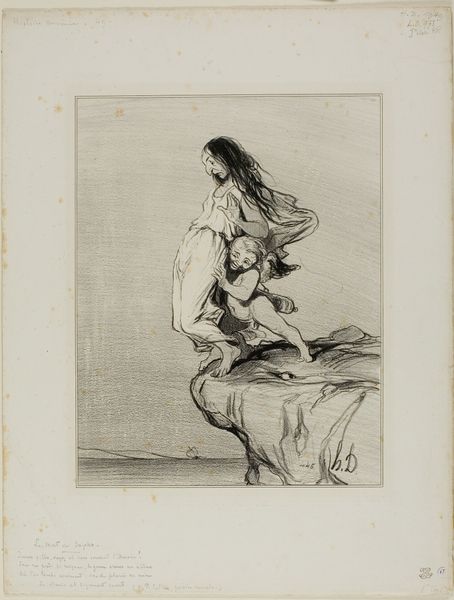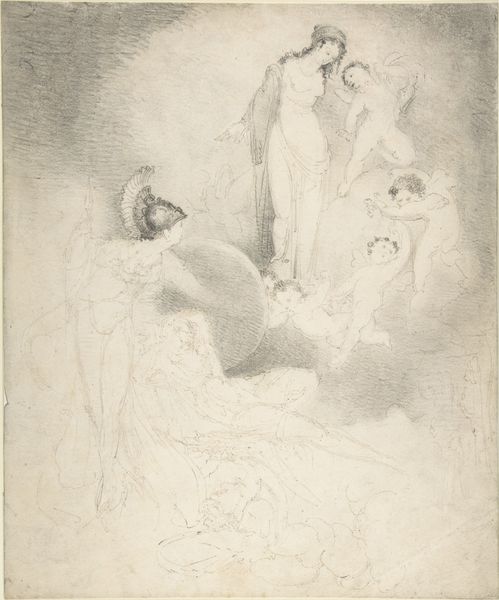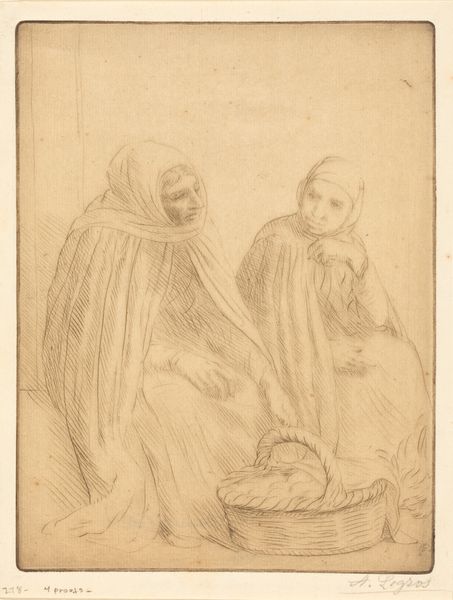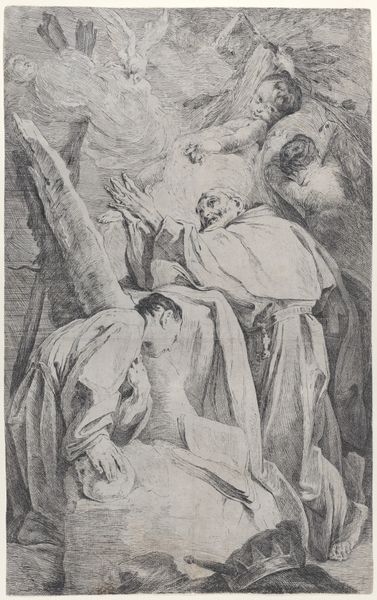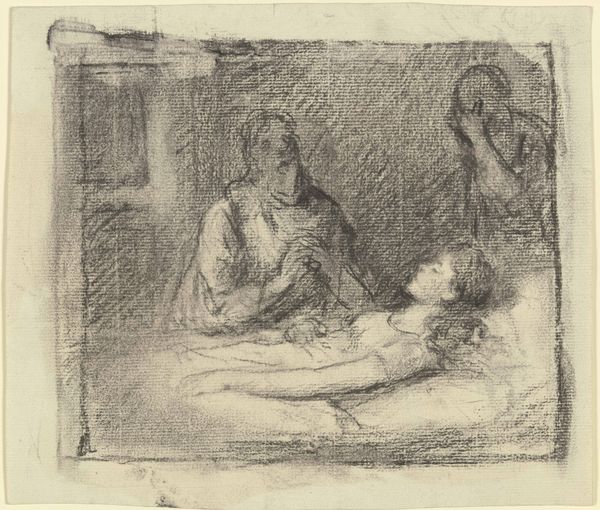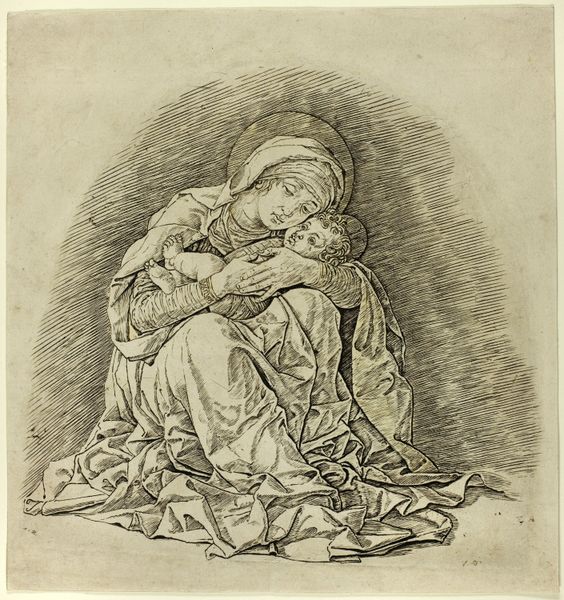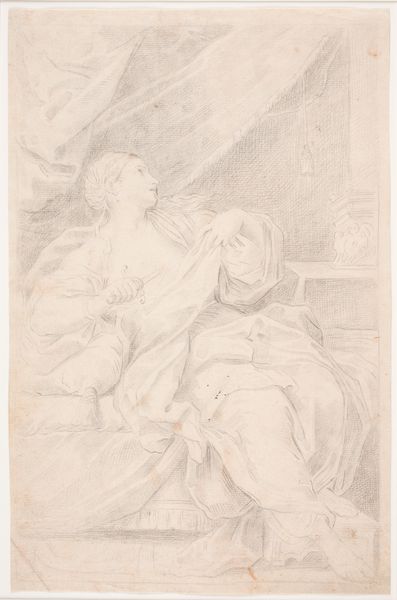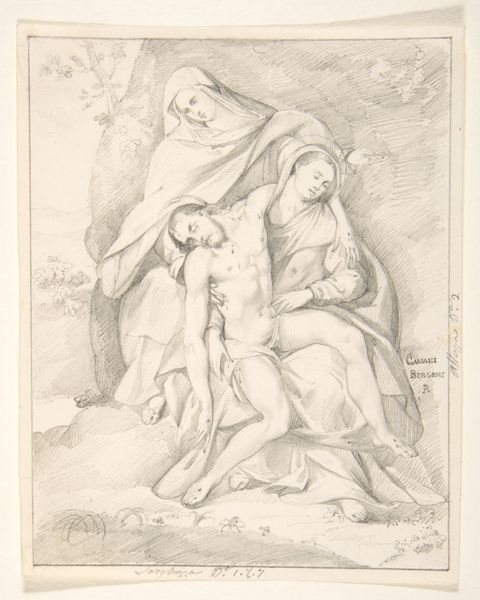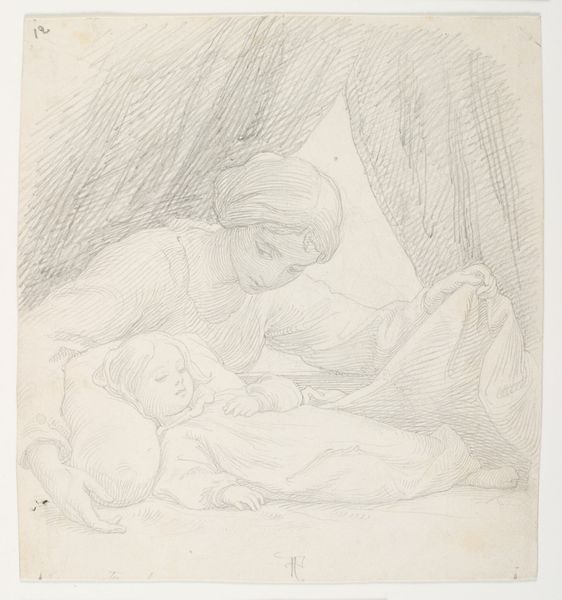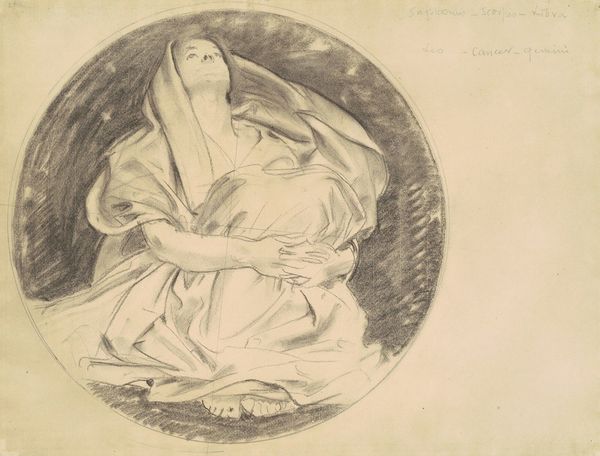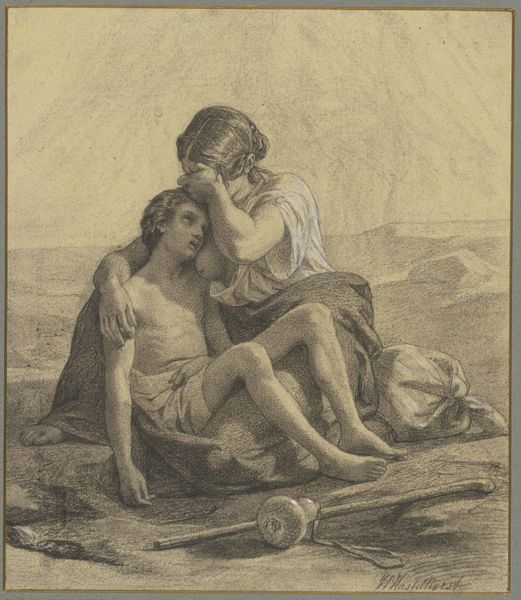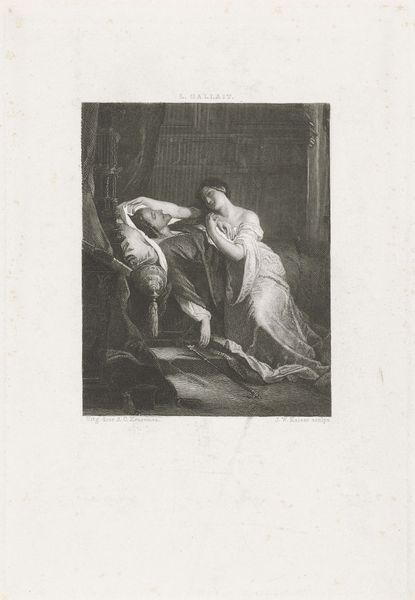
Night and Her Children Aither and Hemera (Hesiod, Theogony) 1805 - 1815
0:00
0:00
drawing, print
#
drawing
#
allegory
# print
#
figuration
#
child
#
romanticism
#
history-painting
#
nude
Dimensions: Sheet: 12 1/4 × 11 1/2 in. (31.1 × 29.2 cm)
Copyright: Public Domain
Curator: Right, let's delve into Henry Fuseli's evocative print, "Night and Her Children Aither and Hemera," created somewhere between 1805 and 1815. It's currently residing at The Met in New York. What strikes you first? Editor: The pervasive sense of gloom. It feels heavy, cloaked. The sharp, scratchy lines contribute to that unsettled feeling. It is definitely something of a nightmare scene to behold... Curator: That gloom is precisely what Fuseli, as a true Romantic, was aiming for. Night, as the primordial mother, is a fascinating archetype, and her children, Aither and Hemera representing the upper air and daylight, are practically engulfed by her. Look at the way she's veiled. Editor: Yes, it's so enveloping, the veil almost seems like another character, blurring the line between concealment and revelation. The drape reminds of both a shroud and something protective; a strange ambiguity I would not expect within an iconography of mother and child. The shadows contribute to this psychological reading; like night is actually devouring what little light is around her. Curator: And what could that enveloping gloom, that engulfment, symbolize, do you think? Hesiod’s Theogony gives us these figures, but Fuseli clearly interprets them through a Romantic lens of intense emotion. The scale, being a print, creates an intimate, almost claustrophobic space. It's not epic in size, yet feels monumental in its psychological weight. Editor: It feels almost like Night isn't so much mothering as consuming, and the children have faces of total fear. Given the period it's made, the iconography takes on more symbolic weight—an allegory about the failure of social institutions during times of terror, or a personal reckoning between dream and horror within modernity. There's a sense of entrapment—no escape for light or reason from primordial chaos and dread, something to ponder... Curator: Absolutely. Fuseli really captures the drama, but also leaves us with so much ambiguity. The piece embodies the Romantic obsession with intense emotional states—ecstasy, terror, sublime wonder... Night is not merely a goddess here; she's the embodiment of the mysteries that reason can't touch. What stays with you most? Editor: How Fuseli conveys a profound sense of dread. It’s fascinating how just line and shadow can convey such complexity of symbolic association and terror. It gives me the creeps, but in the most fascinating, creatively inspiring way.
Comments
No comments
Be the first to comment and join the conversation on the ultimate creative platform.
